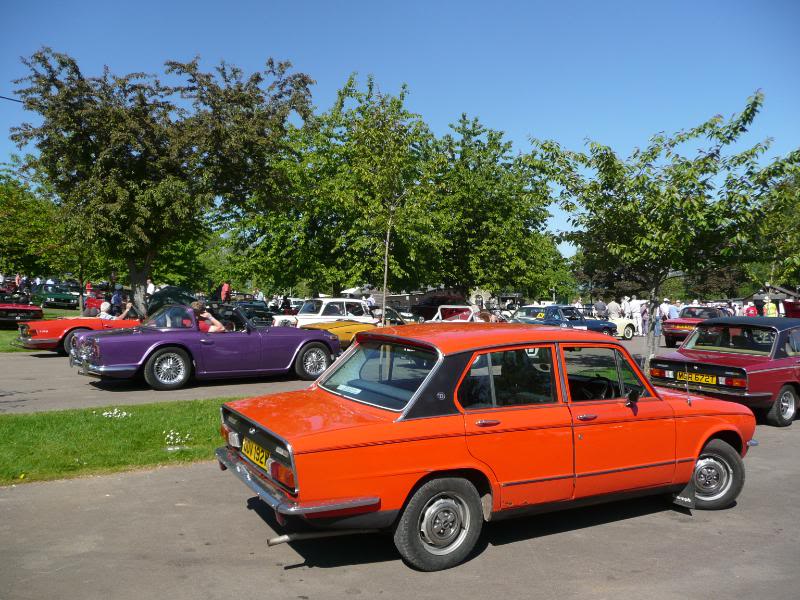
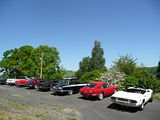
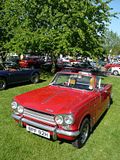
The last car with the “Triumph” badge on it was made in 1984. That is over 25 years ago, and a whole generation has been born, grown up and become motorists without knowing anything much of this British marque. However, having spent a most enjoyable day at Prescott, enjoying a splendid event that brought together a number of the Owners Clubs for the marque, I can tell you that not only is there still massive affection for Triumph, but there are a surprising number of cars lovingly preserved, many of which staged an appearance on the sunniest and warmest day of the year.
THE TRsI would hazard a guess that if asked to name just one Triumph, most people would probably name the TR. First shown in 1952, the TR2 went into production a few months later, and over the next 29 years, a series of models were offered, culminating in the last TR7 and TR8 cars made in 1981. There were a lot of TRs at the event, as you would expect.
TR2/3

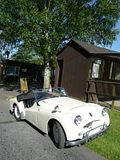
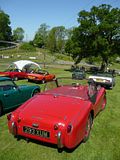

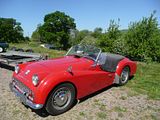
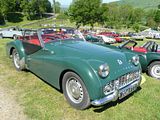
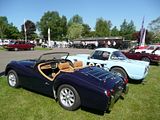
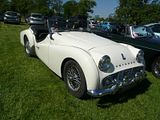 The TR4 was first seen in 1961. Sporting a new Michelotti styled body, it was rather more “civilised” than the TR3
The TR4 was first seen in 1961. Sporting a new Michelotti styled body, it was rather more “civilised” than the TR3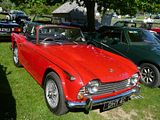
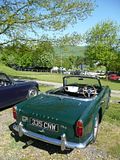
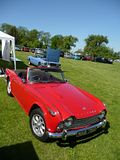
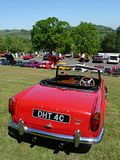

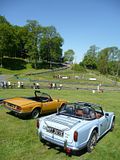
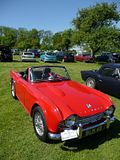
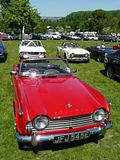
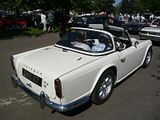
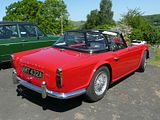


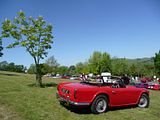
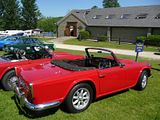
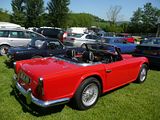 This pale blue car is one of the three surviving works rally cars.
This pale blue car is one of the three surviving works rally cars.
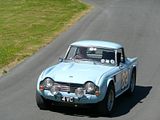 This is an example of the rare Dove, a conversion of the TR4 into a sports coupe.
This is an example of the rare Dove, a conversion of the TR4 into a sports coupe.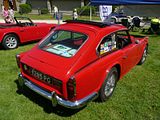
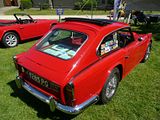
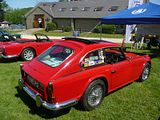 The TR5 was little more than a TR4 with the new 2.5 fuel injected engine. It had a short production life, from late 1967 until the launch of the TR6 in early 1969. The US got a carburettor-ed model called TR250 instead.
The TR5 was little more than a TR4 with the new 2.5 fuel injected engine. It had a short production life, from late 1967 until the launch of the TR6 in early 1969. The US got a carburettor-ed model called TR250 instead.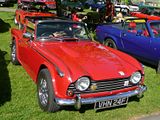
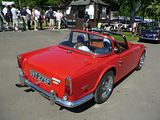
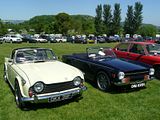 The TR6 was a clever restyle of the TR5, with a smoothed out Karmann body. My favourite of all the TRs.
The TR6 was a clever restyle of the TR5, with a smoothed out Karmann body. My favourite of all the TRs.
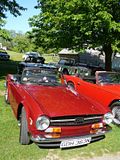
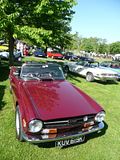

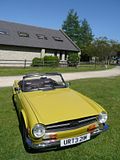

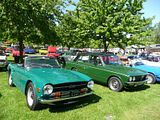

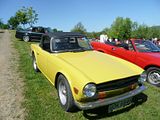
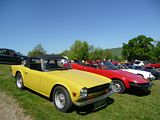
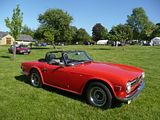
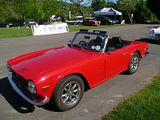

The TR7 was much decried when launched, but resistance broke down over the years and now it is generally accepted as a valid member of the TR family. Sadly, the rather confused product plans of the late 1970s meant that the planned family of cars was never launched. A small number of factory built TR8s were made and sold in the US. A very small number were made for the UK, but the car was never officially offered here. Many cars have subsequently been created by installing the V8 engine into what started out as a TR7.
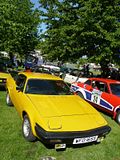
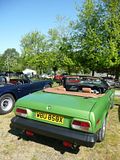


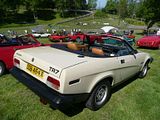
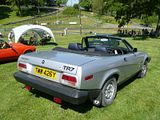

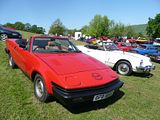 STAG
STAGLaunched in 1970, this car promised so much. Elegant styling, 4 seats (just about!) and a hard top or cabriolet style soft top, and a sonorous V8 should have made it a world beater. Sadly, the car developed a reputation for serious engine reliability issues, with particular problems in the cooling systems which tended to destroy the engine. In the late 1970s, people started to fit alternative engines, most often the Rover V8 or Ford V6 to alleviate the problem. Nowadays, there are cures available, and these cars have come into their own again. There were a lot of them at the event, with just about every colour ever offered on show, with the exception of an orange colour, called Topaz.
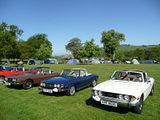


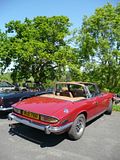
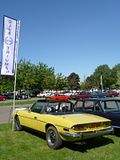
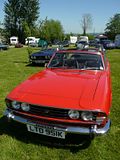
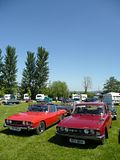
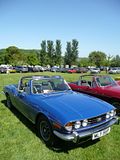
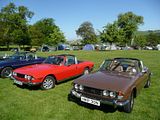
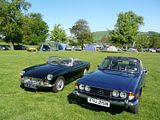
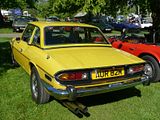


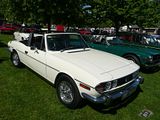
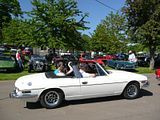
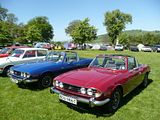

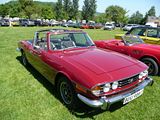 SPITFIRE
SPITFIRELaunched in 1962, the Spitfire was a smaller and cheaper brother to the TRs, and a direct competitor to the recently launched MG Midget and Austin Healey Sprite. The model went through four distinct “Marks” during its 19 year life, but the overall style changed little.
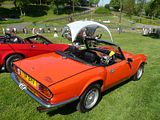
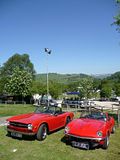

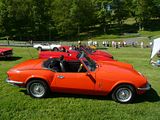 GT6
GT6A six cylinder coupe brother to the Spitfire, this car was deleted in 1973, and never sold in the same quantities as its open topped relative
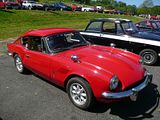


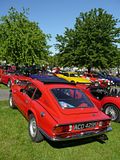
 2000/2500
2000/2500Launched in 1963, at the same time as the P6 Rover 2000, this car quickly built an excellent reputation and became a popular sporting executive choice in much the same way as the BMW 5 series is viewed this way nowadays. In 1968, Triumph introduced the then novel innovation of fuel injection to the car, to create the very rapid 2.5PI. Sadly, the Lucas mechanical injection system was desperately unreliable at first, but I was surprised to see there were several of these cars at the event.
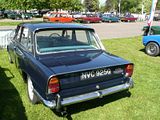
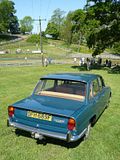
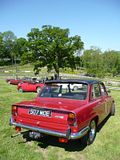 In 1969, a facelifted model appeared, with longer front and back, and this car was built until 1977 when the Rover SD1 took over in what was now BL Cars’ range.
In 1969, a facelifted model appeared, with longer front and back, and this car was built until 1977 when the Rover SD1 took over in what was now BL Cars’ range.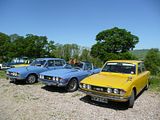
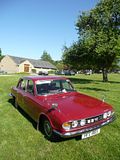
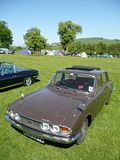
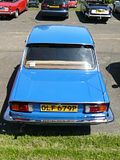
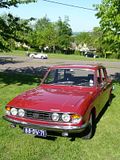
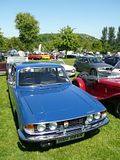
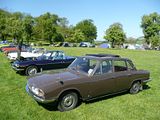 HERALD
HERALDThe Herald was a small car that sold particularly well to ladies, who liked the fact that it was light to drive, and had excellent visibility and manoeuverability to rival that of a London cab. Saloon, convertible, estate and even a short lived coupe were offered between 1959 and 1971.
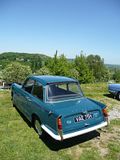
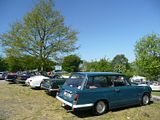
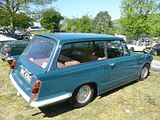
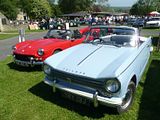
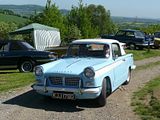 The van version was badged Standard Courier and is a rare sighting indeed.
The van version was badged Standard Courier and is a rare sighting indeed.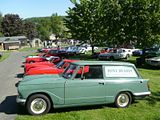
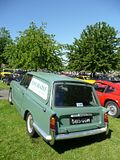 VITESSE
VITESSEThis was little more than a Herald with a six cylinder engine. Initially this was a 1600cc engine, but when the Mark 2 cars were launched, a 2 litre was fitted.

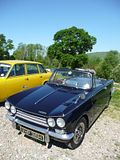
 1300
1300Intended as a possible replacement for the Herald, the 1300 ended up as a rather more costly small saloon, using the then relatively new front wheel drive system. Notably better finished than other small cars such as the Austin/Morris 1100, Viva and Cortina, it enjoyed moderate success.
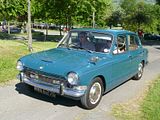
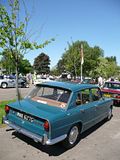

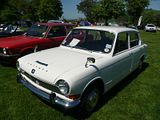

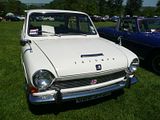 1500
1500The follow on to the 1300, this front wheel drive car was launched in 1970. Three years later, it was changed from front to rear wheel drive.
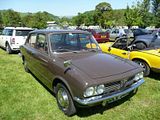 DOLOMITE
DOLOMITEA very popular sporting saloon from the 1970s, whose appeal was further enhanced when the 16 valve Dolomite Sprint was unveiled in June 1973. This is an early car, owned by the forum’s very own Colin Stickland, and it is in amazing condition. A very lovely car indeed.
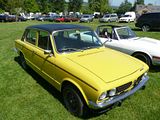

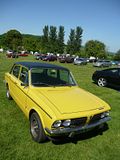


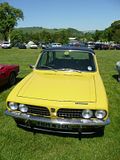
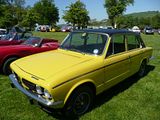
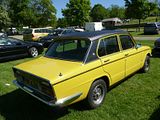 There were plenty of other Dolomite Sprints at the event.
There were plenty of other Dolomite Sprints at the event.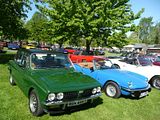
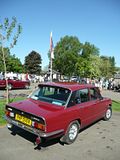
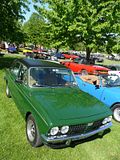

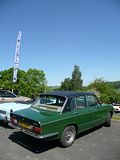
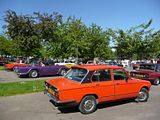
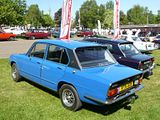
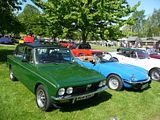
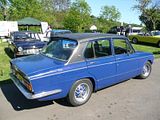
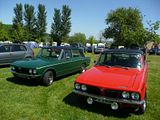 Going back further into Triumph’s past, things get a little more complicated. There were Triumphs before the TR2, though the badge was confined to high end and sporting models.GLORIA
Going back further into Triumph’s past, things get a little more complicated. There were Triumphs before the TR2, though the badge was confined to high end and sporting models.GLORIA
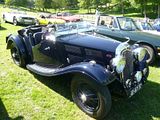
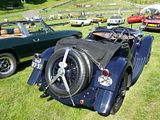 2000 ROADSTER
2000 ROADSTERThis lovely car dates from the late 1940s
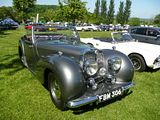
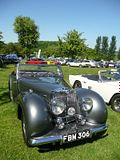 STANDARD
STANDARDAs Triumph was the badge for the high end cars, Standard was the name used for the higher volume models. It was only abandoned when it became clear that the word was clearly being construed not to mean “Setting the Standard” so much as “Bog Standard”.
 There were a number of very early Standard cars at the event.
There were a number of very early Standard cars at the event.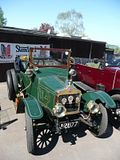
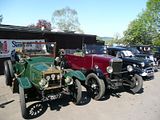

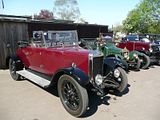 This Flying Standard was a rather nice family car from the late 1930s
This Flying Standard was a rather nice family car from the late 1930s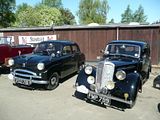 Its smaller and cheaper brother was the Standard 9, like this car.
Its smaller and cheaper brother was the Standard 9, like this car.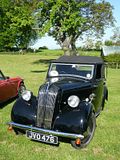 The Standard Vanguard first appeared in 1948, and almost all the early production was exported, as part of the “export or die” mantra associated with post WW2 recovery. This is the rather utilitarian estate car
The Standard Vanguard first appeared in 1948, and almost all the early production was exported, as part of the “export or die” mantra associated with post WW2 recovery. This is the rather utilitarian estate car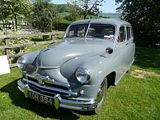
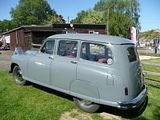 The Standard 8 was a small car that first appeared in 1953. Very basic indeed, where indeed the passenger wiper was an optional extra.
The Standard 8 was a small car that first appeared in 1953. Very basic indeed, where indeed the passenger wiper was an optional extra.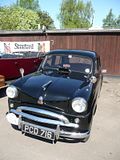 BOND
BONDAnother long since obsolete and somewhat forgotten marque, Bond made both a range of micro cars and from the early 1960s a series of glass-fibre bodied “sports” cars. These latter were badged Equipe. and were based on Triumph mechanicals. The early car, the Equipe GT4S is a frequent visitor to Prescott, but we were also treated (briefly) to the sight of one of the later 2-litre cars, which took the Vitesse as their base. Coupe and Convertible models were available.
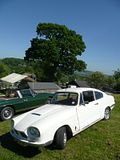
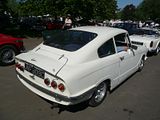
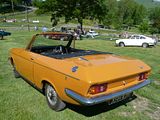
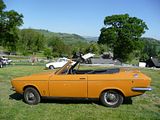 AMPHICAR
AMPHICARThis rather unusual car, engineered and made in Germany, was based on the mechanicals of the Triumph Herald, which is why it was eligible to participate in the event. Few were built and only a small proportion of those that were made survive now. I was surprised to learn that these cars can be worth up to £40,000.
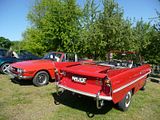
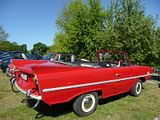 UP THE HILL
UP THE HILL
Following a briefing, drivers were able to take their cars up the famous hill, on the strict understanding that this was not a race or timed trial. Many enthusiastic owners took advantage of this opportunity and their cars were to be seen making the ascent many times during the day. Additionally, at the start of the afternoon session, there was an organised Cavalcade. Here are just some of the participants from that part of the day.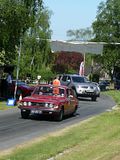
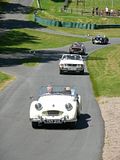
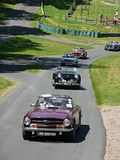
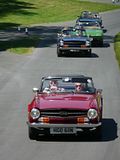

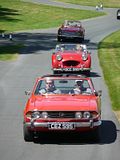
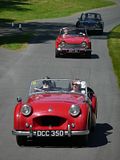
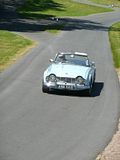
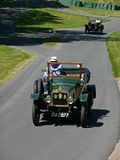
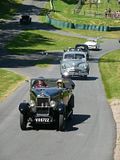

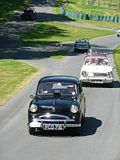
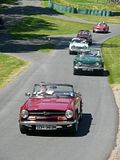
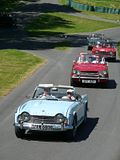
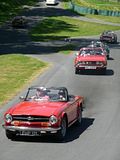

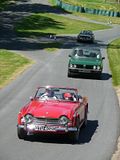
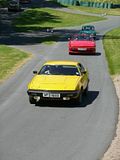
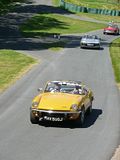
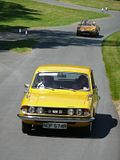
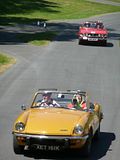
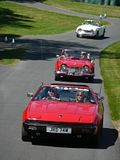
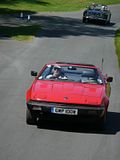
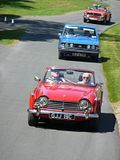

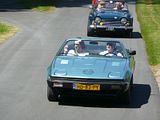 OTHER MARQUES
OTHER MARQUESThere were a few other cars that I found in the car parks, or even taking part in the event, including taking a run up the hill.
Austin Healey – the dreaded enemy from a TR point of view.
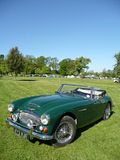
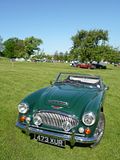
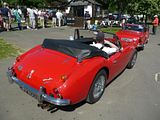 A rather nice first generation Golf GTi
A rather nice first generation Golf GTi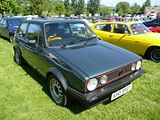 A late model E21 BMW 316
A late model E21 BMW 316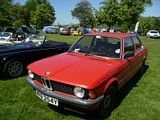
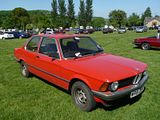 Riley Kestrel
Riley Kestrel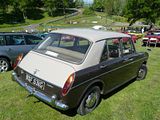 Vauxhall Lotus Carlton
Vauxhall Lotus Carlton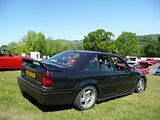 Although most of the cars were from the UK, there were a couple of Luxembourg plated cars and a group of Dutch registered vehicles. I can see why the owners felt it was worth the long journey, as this was an excellent event. Very friendly, lots of interesting cars to see, and plenty of action throughout the day. Made even better by the presence of Piers, Dave Gibson, Colin Stickland and his son Alex. The fact that there was not a cloud in the sky during the whole day just made it even better, though I did have to apply plenty more lotion when I got home. Proof, then, that it is well worth seeking out some different events rather than focusing solely on the big high profile ones.
Although most of the cars were from the UK, there were a couple of Luxembourg plated cars and a group of Dutch registered vehicles. I can see why the owners felt it was worth the long journey, as this was an excellent event. Very friendly, lots of interesting cars to see, and plenty of action throughout the day. Made even better by the presence of Piers, Dave Gibson, Colin Stickland and his son Alex. The fact that there was not a cloud in the sky during the whole day just made it even better, though I did have to apply plenty more lotion when I got home. Proof, then, that it is well worth seeking out some different events rather than focusing solely on the big high profile ones.
2010-05-23 18:39:48



















































































































































































